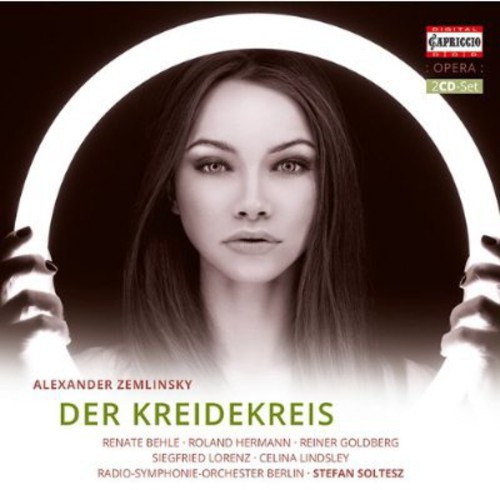Show results for
Deals
- 4K Ultra HD Sale
- Action Sale
- Alternative Rock Sale
- Anime sale
- Award Winners Sale
- Bear Family Sale
- Blu ray Sale
- Blues on Sale
- British Sale
- Classical Music Sale
- Comedy Music Sale
- Comedy Sale
- Country Sale
- Criterion Sale
- Cult Films sale
- Documentaries Sale
- Drama Sale
- Electronic Music sale
- Horror Sci fi Sale
- Kids and Family Sale
- Metal Sale
- Music Video Sale
- Musicals on Sale
- Mystery Sale
- Naxos Label Sale
- Page to Screen Sale
- Paramount Sale
- Rap and Hip Hop Sale
- Reggae Sale
- Rock
- Rock and Pop Sale
- Rock Legends
- Soul Music Sale
- TV Sale
- Vinyl on Sale
- War Films and Westerns on Sale

Chalk Circle / Der Kreidekreis
- Format: CD
- Release Date: 10/29/2013

Chalk Circle / Der Kreidekreis
- Format: CD
- Release Date: 10/29/2013
- Composers: Alexander von Zemlinsky
- Conductors: Stefan Soltesz
- Orchestras: Radio-Symphonie-Orchester Berlin
- Performers: Bengt-Ola Morgny, Celina Lindsley, Gabriele Schreckenbach, Gertrud Ottenthal, Gidon Saks, Hans Helm, Kaja Borris, Peter Matic, Reiner Goldberg, Renate Behle, Roland Hermann, Siegfried Lorenz, Uwe Peters, Warren Mok
- Label: Capriccio
- Number of Discs: 2
- UPC: 845221051901
- Item #: 862013X
- Genre: Classical, Opera/Operetta
- Release Date: 10/29/2013
Product Notes
The old Chinese drama of courtroom and customs was usable only as raw material. In it's original version it is a fairly dull, wooden affair, handled extremely clumsily from the dramatic point of view. It is in effect inventing a Chinese fairy-tale. No strict Chinoiserie: it had to be as if in a dream of China. Klabund (1925) Two years after the death of Klabund, Zemlinsky decided to use his Chalk circle as the basis for an opera. He recast the five-act 'play after the Chinese' first into a two-act, later into a three-act version, and composed his Chalk circle in 1931/32. This blend of a fairy-tale Utopia, social criticism and inwardness makes itself felt in Zemlinsky's music, which seeks to combine varied stylistic components: Chinese coloration appears in the orchestral scoring, which is enriched with gongs and other exotic-sounding instruments: The melody often avoids semi tonal steps and so takes on a pentatonic character. It was the seventh and also his last completed opera, from which the then 61-year-old Zemlinsky hoped for the definitive breakthrough as an operatic dramatist.


